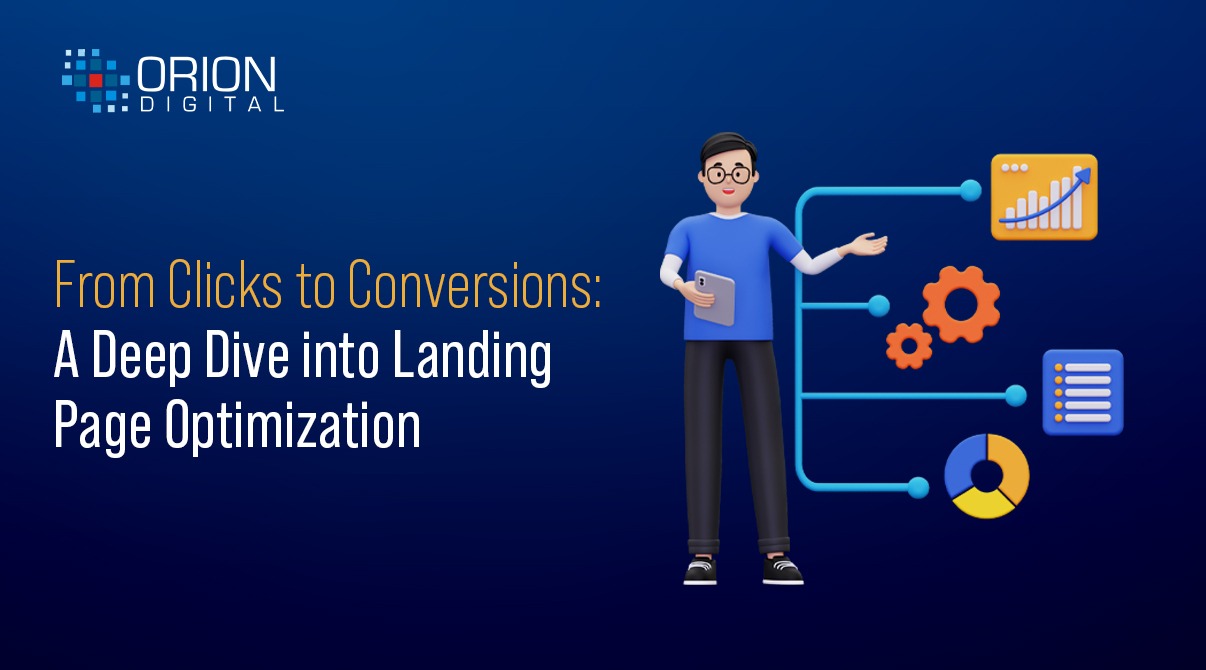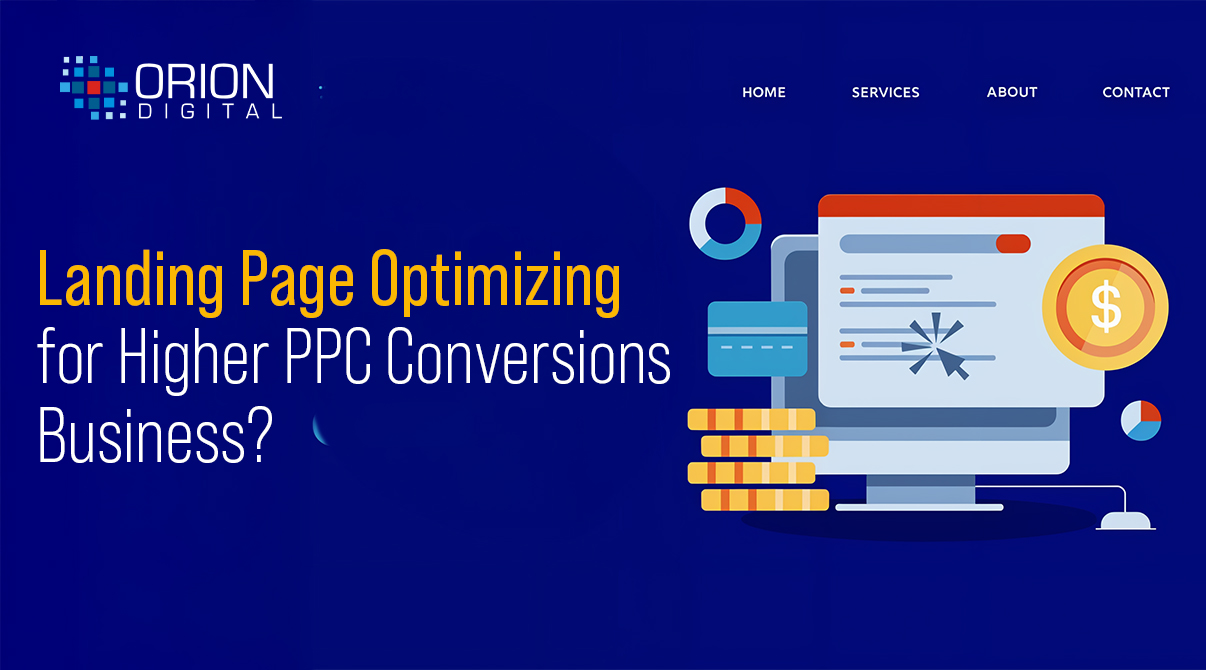
From Clicks to Conversions: A Deep Dive into Landing Page Optimization
- Naveen N
- February 9, 2024
- SEO, Digital Marketing
- Digital Marketing, page optimization, SEO
- 0 Comments
Landing Pages turns Website Traffic into Conversions/Money
Getting traffic to your website is only the first step. You need to convert visitors into leads and customers to grow your business. This critical second step is where landing pages come in.
Your landing pages are like the receptionist in your office building. They greet each visitor and determine whether they will stay to learn more or quickly turn around and leave. Just like a good receptionist can make a great first impression, well-optimized landing pages are essential for converting clicks into business opportunities.
In this blog, we’ll talk about the best practices for landing page optimization. We’ll look at key elements of high-converting landing pages as well as how to create a seamless user experience. You’ll also know about testing and analysis methods for improving your pages. With these tips, you’ll be ready to turn your website traffic into more leads and sales.
Key Elements of High-Converting Landing Pages
Your landing page design and content have a big impact on conversions. Here are some of the most important elements to optimize:
Clear, Benefit-Focused Headlines
Firstly, Your headline is the first thing visitors see on your landing page. It needs to quickly communicate your value proposition and draw readers in. Research by Copyblogger found headlines with 6-8 words get the most engagement. Therefore, Prioritize key benefits like “Get More Leads” rather than generic phrases like “Welcome”.
Persuasive Value Proposition
Clearly explain how your offering solves a problem or improves your visitor’s life. Focus on specific use cases and avoid generic claims. Back up your promises with proof points like customer stories, statistics, awards, or certifications whenever possible.
Prominent Call-to-Action Buttons
Calls-to-action (CTAs) prompt your visitors to take action. Additionally, Make sure your CTAs stand out visually and use clear commands like “Start Free Trial” or “Buy Now”. Place your primary CTA above the fold and use complementary CTAs throughout the page.
Relevant and High-Quality Images
Reinforce your value proposition with relevant photos, screenshots, or illustrations. Show your product or service in use. Optimized images load fast to improve page speed. Provide alt text for accessibility and SEO.
Social Proof and Trust Symbols
Furthermore, Build credibility by highlighting customer testimonials, press mentions, case studies, and reviews. Display certifications, awards, or security badges prominently. Mention the number of customers, users, or years in business.
Optimizing for the User Experience
Beyond page content also considers the full user journey. Your landing page experience should be seamless, engaging, and tailored to your target audience.
Mobile Responsiveness and Page Speed
For starters, Use a mobile-friendly landing page template. Optimize images, minify code, and defer third-party scripts to keep load times under 2 seconds. Accelerated page speeds improve conversions by up to 38% according to Google.
Clear Page Layout and Navigation
Additionally, Use clear headlines, paragraphs, and bullet points. Break up long sections with images or dividers. Link to other relevant pages and provide easy paths back to the homepage. Indicate the next steps and don’t overwhelm visitors.
Targeted Content for Audience Personas
Tailor content to your target customer demographics, pain points, and preferred messaging. Prioritize information that your research shows resonates best with each audience segment.
Pleasant and Seamless User Flow
Seamlessly, Guides visitors smoothly through your sales funnel. Use clear CTAs and navigational cues. Minimize form fields and friction points. Surprise pop-ups or difficult menus cause frustration. Stick to standard UX patterns that feel familiar.
Testing and Analysis for Continuous Landing Page Optimization
Don’t settle for a “set it and forget it” approach to your landing pages. Leverage data and testing to continuously improve performance.
A/B Testing Different Versions
Try variations on elements like your headline, layouts, images, buttons, and copy. A/B test against your existing page to see which option boosts conversions. Run tests continually to keep optimizing.
Analyzing Performance Metrics Like CTR and Bounce Rates
Dig into analytics to understand how your pages are performing. Monitor metrics like click-through rates from emails or ads, time on page, and bounce rates. Review user flows. Identify high and low points to isolate strengths and weaknesses.
Optimising Based on User Behavior Flows and Funnels
Analyze where users enter and navigate your site. See which pages attract attention versus lose visitors. Optimize user flows for key conversion funnels. Remove distractions on key landing pages.
Tools for Landing Page Testing and Analysis
Use dedicated tools like Optimizely, Unbounce, or Google Optimize to easily create and A/B test landing pages. Integrate analytics like Google Analytics to measure performance. Tap heatmaps and click tracking to understand user behaviour.
Key Takeaways and Final Verdict
Well-designed landing pages are crucial for turning website visitors into leads and customers. Follow landing page best practices when it comes to page content, layout, speed, and navigation to create a user-friendly experience.
Keep optimizing by continually testing new variations and analyzing performance data. There is always room for improvement. Importantly even minor changes can have a big impact on your conversion rates over time.
Notably, Focus on crafting landing pages tailored to your target audience and their customer journey. Effectively Design pages that engage visitors and guide them to take action. Treat your landing pages like a pivotal first touchpoint instead of a generic template with optimized landing pages, you can transform more traffic into sales and grow your business.
Related Posts

- Naveen N
- February 7, 2025
Effective Strategies for Lead Generation in the Digital Age
In the fast-moving digital world of today, lead generation sometimes gives the feeling that one ..

- Naveen N
- February 16, 2024
Engagement: Revolutionizing Digital Conversations
How Engagement is Changing Digital Conversations Digital conversations are changing how brands ..




